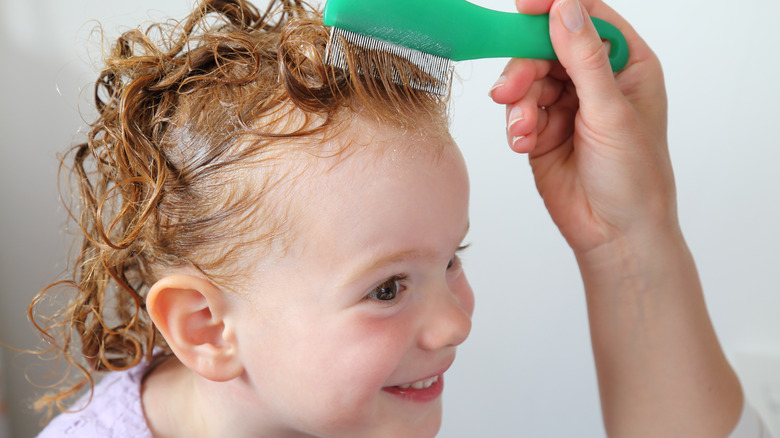The New Expert Guidance For Children With Head Lice May Surprise You
Also known as the head louse, an estimated 6 million to 12 million cases of head lice develop annually in the U.S. in young children between the ages of three and 11, reports the U.S. Centers for Disease Control and Prevention (CDC). As a parasite, human blood is the head louse's primary food source. Not only can they be found on the human scalp, but they can also live on human eyebrows and eyelashes.
Unlike other insects, head lice do not have the ability to fly or jump. Instead, infestations occur through direct hair-to-hair contact with others. Therefore, contact with the personal items of an infested individual, such as hats, combs, towels, or more, can put one at risk for exposure. Spreading is most often observed in pre-school and elementary school-aged children since close contact with others can occur within these settings.
As per a recent press release, it's been seven years since the American Academy of Pediatrics (AAP) last updated their guidelines regarding the diagnosis and management of child head lice. Previous guidance instructed children to stay home from school until they were lice-free. Now, experts have made amendments to these recommendations.
The effects of children missing school due to head lice
"Head lice are an unpleasant part of the human experience, but they can be successfully managed and are no reason for a child to miss school," said Dr. Dawn Nolt, lead author of the AAP report, as per the press release. Experts state that such actions can result in psychological stigma and stress on behalf of the child. Therefore, the report no longer advises that children be sent home in the event of an infestation, but rather be treated outside of school hours. "A child or adolescent should not be restricted from school attendance because of head lice, given the low contagion within classrooms," WebMD cites from the report. "Lice found on combs are likely to be injured or dead, and a louse is not likely to leave a healthy head unless there is a heavy infestation."
Instead, the AAP advises that public education regarding treatment for head lice come from pediatricians, as per the press release. In addition to the use of topical shampoos, lotions, and other FDA-approved products, the report also included an updated list of suggested medications in the event that the child does not respond to traditional treatment methods (via WebMD).
According to the AAP report, "The ideal treatment of head lice should be safe, free of toxic chemicals, readily available, simple to apply, effective, and inexpensive."


